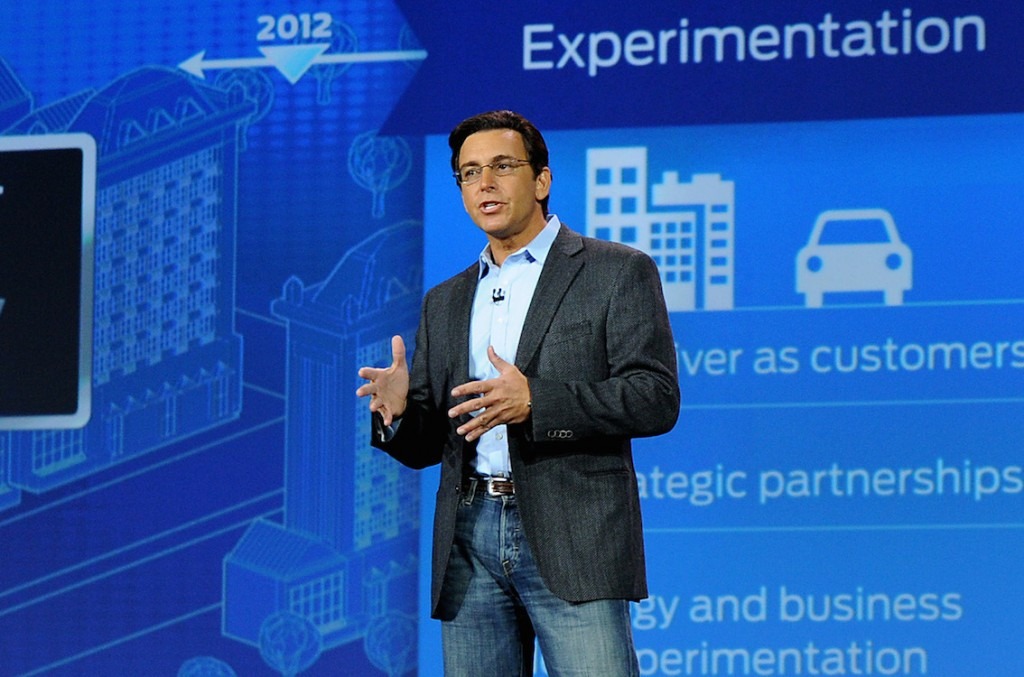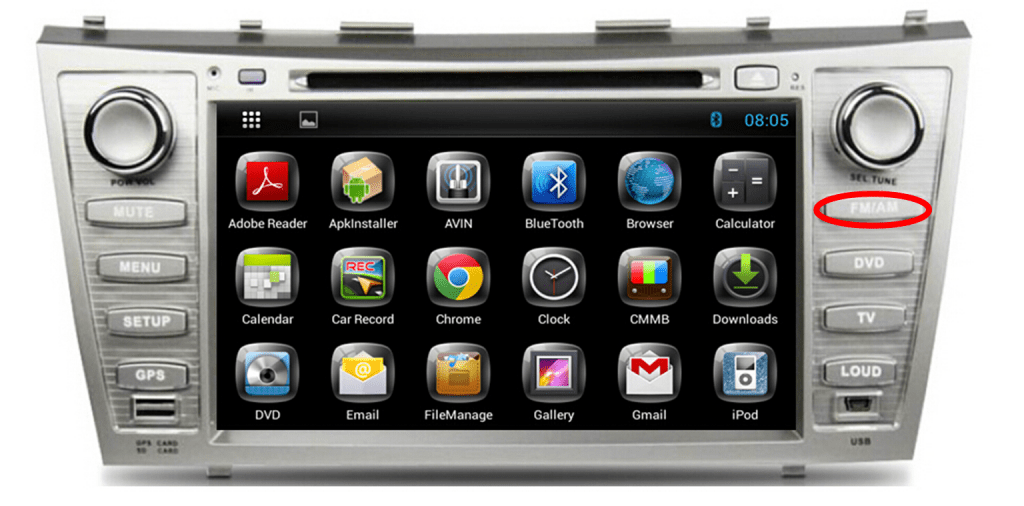Yesterday’s blog post was about the future, and how two very prescient analysts help their respective industries determine how current conditions will very likely influence the products and services that are in the pipeline.
Ford’s Sheryl Connelly and radio’s James Cridland are both loyal to their core fields. But their mission is to remind their respective leadership of the cold, hard truths about how what’s down the road and how it will impact their target consumers, their bottom lines, as well as the future of their industries.
So perhaps this post can serve as a conversation starter as we head into the new year. In the nearly 11 years since our JacoBLOG has been in existence, we have walked the line between being a cheerleader and an agent provocateur for the radio broadcasting industry. We vociferously support radio while simultaneously hoping the industry and its leadership steps up and does better as the media world continues to disrupt itself.
2016 would be a great place for that process to begin in earnest because the digital clock is ticking.
And in that spirit, both of the aforementioned futurists are delivering messages to their head honchos – whether they choose to listen to them or not. For Ford’s Connelly, part of her raison d’etre is to let her company’s corporate team know when conditions may be unfavorable to the auto industry. In yesterday’s post, she outlined the challenges of attracting Millennials to auto ownership at a time when shared mobility and public transit are becoming increasingly popular generationally.
Her CEO, Mark Fields, is listening. Rather than duck the issue or deny it isn’t happening, Ford (and the rest of the auto industry) acknowledges it has work to do on this front. And the company is actively conducting research, launching experiments, and planning for the future that Connelly describes. In fact, Ford is in the process of launching new initiatives bundled under the umbrella of the Ford Smart Mobility Plan.

But Ford’s actions may be even more aggressive, illustrated by a reported new partnership with Google to produce self-driving cars that may be announced next month. For Google, it means focusing on its autonomous driving technology, while eliminating the need to build expensive manufacturing plants. And for Ford, the technological benefits of a Google alliance are obvious, and address many of the long-term Millennial concerns and challenges outlined by futurist Connelly.
Many other automakers have shared mobility and autonomous driving initiatives well underway, too. Rather than be disrupted by the demographic and cultural inevitabilities, most are attempting to get ahead of the curve to ensure a viable future. The very process of admitting that the status quo is threatened by up and coming generational upheaveal is a first step toward maintaining the automotive sector as a giant in America and across the globe.
In contrast, the radio industry is often loathe to admit the changing patterns of consumer media consumption, especially by those same dreaded Millennials and their addiction to smartphones, on-demand, and customization, not to mention their aversion to commercials.
Rather than meeting these challenges with defensive responses that continually quote radio’s still impressive reach across many demographic groups, broadcasters would do well to acknowledge their challenges rather than denying they exist. Instead of diminishing and denigrating new devices and platforms – from satellite radio to streaming to pure-plays to the Internet itself – why not study these technologies, and embrace the ones that can be purchased, partnered with, or improved upon?
As Ford admits its serious Millennial challenge, so should radio because it’s not going away. Gen Y represents the new majority, and as the medium matures, plans to face the inevitable demographic shifts need to be put into motion, rather than ignoring the dilemma even exists.
James Cridland has long espoused the need for the radio broadcasting industry to put aside its historic differences and find ways to work together to achieve common goals. That’s the essence of the Radioplayer concept in the UK. But even Cridland admits that it is easier to accomplish a spirit of unity in a smaller geographic space like Great Britain with fewer broadcasters and a smaller footprint.
In the States, “speaking in one voice” is a profound challenge. But so is disruption and rapidly moving generational change. To stay vibrant and competitive in a world where Millennials are in the majority, the radio industry simply must admit it’s being challenged, and then take steps to solve it. In the area of shared mobility, radio broadcasters can look at the automotive industry as an example of what this looks like and how it can be done.
But the auto industry has its share of denial, too. Look no further than the digital dashboard, a piece of technological real estate that has become near and dear to us in radio.
As each auto manufacturer has privately worked on its own proprietary dashboard interface, chaos and a lack of standardization has prevailed. You can master the Audi Connect system in your new A6, but rent a Ford Fusion at Disney World and you’re back to Square One. Chances are, you’d be challenged to pair your phone, much less figure out how to navigate the entire system.
The price that’s paid for not working together on a simple, universal dashboard interface has become more than evident in the past year. That lack of a unified front has opened the door to a couple of pretty smart technology companies – Apple and Google.
As we’ve discussed in detail in this space over the past year, CarPlay and Android Auto are now both serious threats to the branding, data ownership, and cache of the entire automotive industry. By not listening to the futurists in the midst, carmakers have been forced to accept these new “outside” ecosystems in their dashboards, along with the instability and disruption that come along with them. The stark realization that consumers are more loyal to their mobile phone platforms than they are to the makes and models of the vehicles they drive has been a “reality bites” moment for automakers.
And by not putting their differences aside, the OEMs have left themselves vulnerable to those tech barbarians at the gates. Every broadcast radio CEO can learn from their mistakes.
In fact, my wish for radio in 2016 would be a true spirit of cooperation; a scenario where the “40 Most Powerful” would come to the realization that a united front is a smarter strategy than the power struggles so common to the radio broadcasting industry. There are deep differences among many of radio’s CEOs, they can get personal at times, and they threaten the very future of the business everyone agrees they love. Most of radio’s leaders are from similar backgrounds, having grown up in the radio business, spending time in an air studio, selling time, and serving their communities with dignity. They have a lot in common, including the dilemmas and disruptions that have become part of the fabric of the media world.
Today, the radio community is in dire need of a unified effort that translates to searching for common goals, and coming together to find ways to get them accomplished.
Speaking in one voice may be the only way forward for the radio business in the U.S. to compete in today’s media landscape, as well as deal with the new realities that are just around the corner.
No one can predict the future. And at CES last year, the question we posed to many executives in automotive and technology was this:
“What do the next five years look like?”
We asked it of everyone we met. And more often than not, the response was typically a smile and a shrug. Most industry experts reminded us that five years ago, it would have been impossible to even imagine the environment we’re experiencing today.
Thus, envisioning where we’re going to be just five years from now is a question they all ducked. But most agreed about one thing:
The next five years will determine the fates of many industries, companies, and brands. How they navigate the inevitable turmoil and change will speak volumes about how well they’re situated in 2020 – and beyond. Or whether they’ve survived at all.
Early next month, we’ll be back in Las Vegas for CES16 asking the same question. And the experts will very likely continue to struggle with accurate outcomes.
Hopefully, for radio, the industry is still a vital part of the conversation five years from now.
Best wishes for a happy, healthy, and prosperous new year.
JacoBLOG will return with fresh content on January 4th. We will be highlighting the best-read posts of 2015 until then. Thanks for reading our blog.
There’s still time to sign up for Techsurvey12 so you can play “futurist” with your own station. For information, FAQs, & registration, click here.
- What To Do If Your Radio Station Goes Through A Midlife Crisis - April 25, 2025
- A 2020 Lesson?It Could All Be Gone In A Flash - April 24, 2025
- How AI Can Give Radio Personalities More…PERSONALITY - April 23, 2025






A great read to end the year, Fred (et, al) Thanks for making such excellent work available to our industry on a daily basis (and not putting it behind a paywall:))
Have a great break.
DP
Thanks for being an avid reader and a great friend. Best to you, your family, and your staff this new year.
Fred
P.S. Now about that pay wall…
I think there are a lot of legitimate challenges to implementing the “one voice” plan. First, some of radio’s biggest players are struggling to avoid bankruptcy and they probably feel as though their day to day issues supercede any meaningful 5 year plan. It’s hard to focus on 5 years when you’re not sure about 5 months. Second, the more players sign on to a plan, the less change it’s likely to include – more adopters mean more compromises and that limits how far any such plan can go.
I wonder if a 5 year plan for radio would be better served by some of the mid sized players implementing really innovative beta tests on a station by station, market by market level. The big, financially challenged might be more likely to implement those things if the sorting ad debugging was done by companies with the financial bandwidth to afford it.
The Entercom/Greater Media/Cox/Hubbard tier might have to lead the pack while those with financial challenges sort them out. Maybe radio gets to one voice in pieces and steps rather than though an immediate grand bargain.
Bob, in some ways, those mid-tier companies are doing just that. And ultimately, they may end up being the salvation of the industry. It’s ironic that level of leadership is coming from smaller companies, but the combination of agility and less debt is a powerful one. Thanks for adding to this blog all year long.
I’m treated like Chicken Little when I bring these topics up. I’m glad I am not alone in thinking that radio as a whole needs to move faster and embrace new technologies. It is an on demand world and we need to embrace it and figure out our place in it.
Amelia, appreciate the comment and the sentiment. We’ve got to keep – faster and smarter. Thanks for reading the blog.
Fred, please never stop reminding us that the Emperor is naked. Even with a format like Classic Rock, where the past is our future, innovative thinking is crucial to survival. We must be open and honest with ouselves in order to flourish. Thank you for reminding us of that fact.
Here’s to a groundbreaking new year!
Right there with you, Russ. Best to you, and thanks for reading our blog.